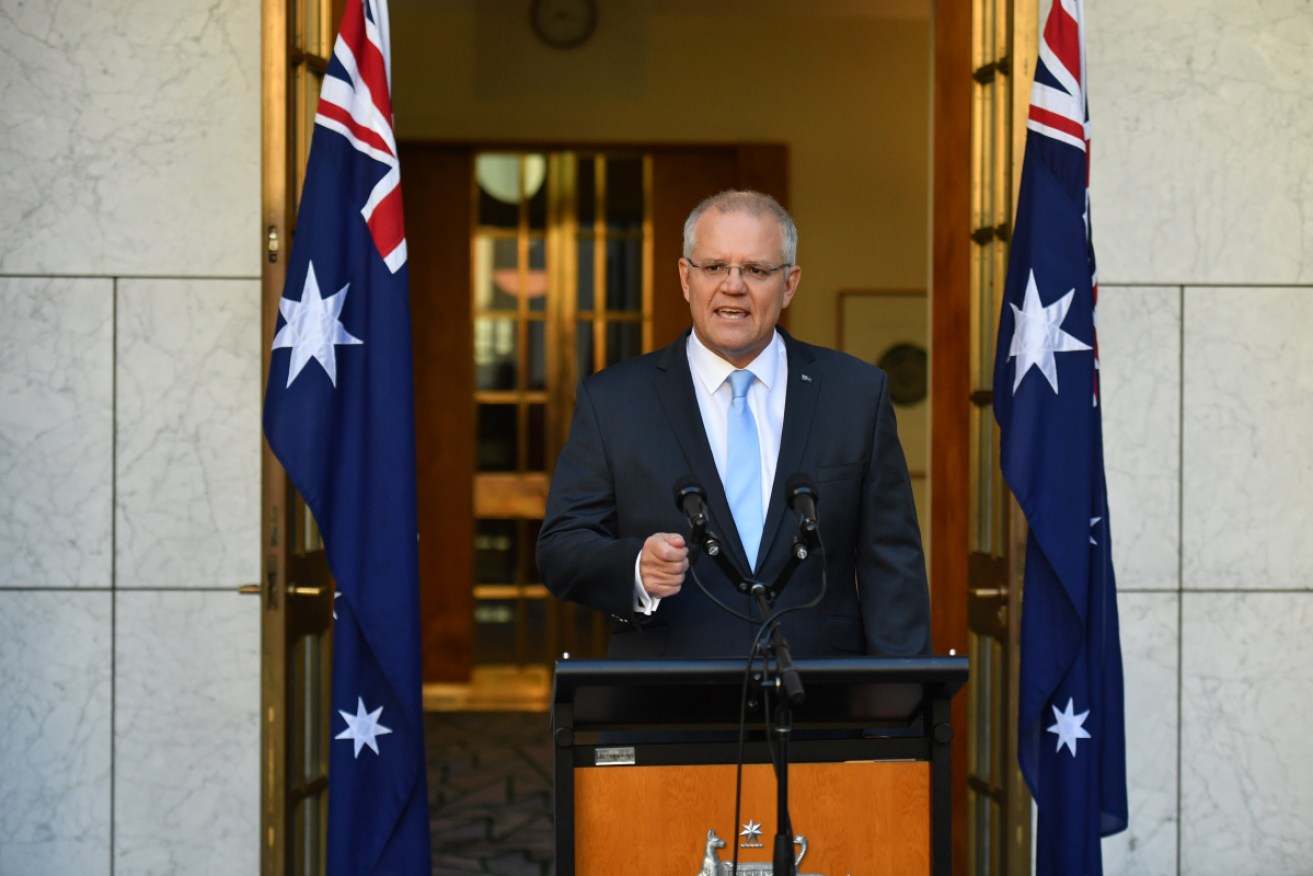Samantha Maiden: PM Scott Morrison started the race behind, but is in with a chance


Scott Morrison announced a federal election will be held on May 18. Photo: AAP
Can Scott Morrison win the 2019 election despite starting the race behind in the polls?
It’s not unprecedented.
The Prime Minister’s political hero John Howard did it in 2004 and Paul Keating did it in 1993, when he won “a victory for the true believers.”
The Liberal Party still believes it can chart a course to re-election by stemming heavy losses in Victoria with an attack strategy in NSW and Tasmania and modest gains in Queensland.
Labor strategists concede the election will be closer than expected and not the landslide some are expecting.
It’s the state of Victoria that is the key to victory for Bill Shorten.
The ALP hopes to win up to four seats in that state alone, the bulk of the seats it needs to form a majority. The seats in play include Dunkley, Corangamite, La Trobe, Deakin and Chisholm.
The seat of Indi, which was captured by independent Cathy McGowan when she defeated Sophie Mirabella in 2013, could also return to the Coalition.
The ALP could lose the NSW seat of Lindsay that was held by Emma Husar and Herbert in Queensland, which includes Townsville.
That means Labor must pick up enough seats in Victoria and elsewhere to not only balance those losses but secure the majority it needs to form government.
The Liberals are fighting to retain Tony Abbott’s seat of Warringah against independent Zali Steggall, but many insist that Mr Abbott is still likely to prevail despite a solid kicking from voters.
But the Liberals could be set to regain the seat of Wentworth, which fell to independent Kerryn Phelps in the aftermath of Malcolm Turnbull’s knifing as PM.
In Tasmania, which is traditionally electorally volatile, the Liberals are also eyeing three seats.
According to Newspoll, the Prime Minister starts the election with Labor in front 52:48 on a two-party preferred basis.
Labor leader Mr Shorten needs to win just seven seats to form government in his own right.
Pollster David Briggs, who is responsible for the Newspoll and Galaxy polls, told The New Daily that history shows it’s possible for Prime Ministers to surprise.

Paul Keating served as Labor leader from 1991 to 1996. Photo: AAP
“In 1993, Paul Keating started the election behind with a two-party preferred vote of 52.5 to 47.5, which is pretty similar to where we are now,” he said.
In the 1998 election, when John Howard was attempting to introduce the GST, he was also trailing Labor when the election was called.
“Mr Howard also started the 1998 election with Labor in front on 51.5 per cent,” he said.
In 2004 as he faced Labor’s Mark Latham, the Prime Minister started the campaign with the voter evenly split, but Labor then established a winning margin during the campaign.
“They started the campaign neck and neck with Labor in the lead midway through the 2004 campaign in 52:48,” Mr Briggs said.
Despite that lead, Mr Howard defeated Mr Latham on election day.

Prime Minister John Howard, left, shakes hands with Opposition Leader Mark Latham during the election debate in Sydney in 2004. Photo: AAP
“It comes down to the risk. If people think there’s a risk, they will stick to what they know. At the moment, looking at the figures 52:48 Labor is in front. But Bill Shorten is unpopular, people don’t trust him or don’t support the negative gearing and franking credit changes.”
On current polling, Labor should pick up around 10 seats – just a handful more than what it requires to claim a majority in the House of Representatives.
But the Senate is likely to prove difficult to navigate, raising questions over whether Mr Shorten can deliver on his ambitious policy of negative gearing reform and tougher climate change targets even if he wins the election.
The first Liberal Party election advertisement released on social media is titled “My vision for Australia” and features a focus on values over policy.
“The real question is: What country do you want to live in for the 10 years?” Mr Morrison asks.
“It has taken us 12 years to get the budget back on track. You change the government, you change the course of the country and it takes a long time to get it back on track.”
The PM has already secured Mr Shorten’s agreement to suspend political advertising over the Easter weekend.








